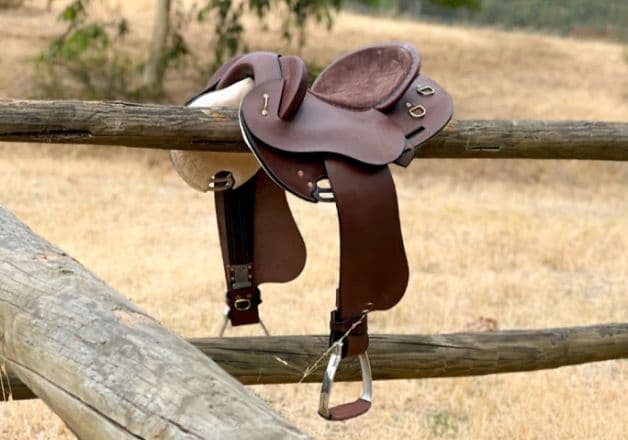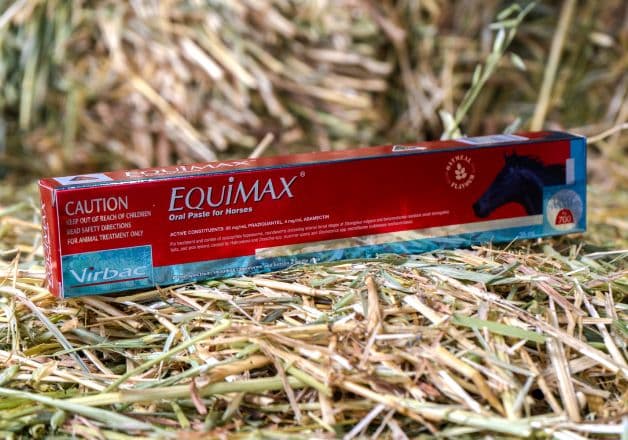
Winter Horse Hoof Care: Tips to Maintain Healthy Hooves
Cold, wet, muddy – winter is a different ball game when it comes to hoof care. What was a firm, dry paddock last month might now be a slushy mess. That means more moisture, more bacteria and more chance of hoof issues.
From soft soles to thrush flare-ups, the season can be tough on your horse’s feet. And let’s be honest, daily hoof checks can feel like a big ask when it's 3°C and raining sideways.
Remember, you don’t need a full overhaul of your routine for winter. Just a few smart tweaks to keep your horse’s hooves in top shape all season long.
Why hooves struggle in winter
So what can happen when hoof care slips through the cracks in winter? Unfortunately, plenty. And none of it is great for your horse.
There are a few common issues that can arise:
- Thrush: This is one of the most common issues: a bacterial infection that loves damp, muddy conditions and often hides in the frog until there’s a nasty smell or signs of soreness.
- Chipping and bruising: Soft hooves from moisture are more prone to chipping and bruising, especially when Australian ground swings from sloppy to rock-hard in a matter of days.
- Cracks and flares: Cracks and flares can form when hooves expand with water, then contract as things dry out.
- Abscesses and inflammation: When bacteria enters through tiny cracks or bruises, it can lead to painful abscesses, heat in the hoof, and inflammation that may cause sudden lameness.
Is rugging worth it for hoof health?
Rugging might not seem directly linked to hoof health, but it plays a part.
A cold, wet horse uses more energy to stay warm, which means less is going toward growth and recovery – including hoof growth.
Keeping your horse warm and dry helps maintain overall health. Because when horses are comfortable, they’re more likely to move around (which naturally boosts circulation and supports hoof health).
Better diets for better hooves
Winter often means there’s less fresh grazing available, so many horses rely more heavily on hay or hard feed during the cooler months. While that usually covers the basics, it can sometimes fall short on the specific nutrients that support hoof health.
Biotin, zinc and methionine all help maintain strong, resilient hooves – but not every diet naturally includes them in the right amounts.
If your horse has slow-growing hooves or seems prone to cracking, a hoof supplement might be worth considering.
It’s just another way to give your horse a bit of extra support from the inside out!
Greasy heel in horses
While most winter hoof problems start at the hoof itself, it’s worth remembering that the skin just above it, particularly around the pasterns, is just as vulnerable in wet, muddy conditions.
Greasy heel – also known as mud fever – can be a common health issue in winter, especially when horses are standing in wet, muddy conditions for long periods.
The skin around the pasterns becomes soft and vulnerable, making it easier for bacteria to enter and cause irritation, scabbing and swelling.
How to treat greasy heel in horses
Start by gently cleaning the area with an antibacterial wash, then towel dry – no rubbing, just a soft pat to avoid irritating the skin.
Clipping the hair around the pasterns can make things easier to keep clean and dry. A 10-minute soak helps soften any scabs, so they can be gently wiped away without causing bleeding (which only leads to more scabbing).
Once clean, rinse thoroughly, dry the area again, and apply a soothing antiseptic ointment. A light bandage can help keep the area protected from mud and sun while it heals.
As always, prevention is your best bet. If your horse is out in a muddy paddock, check that they’re not standing in the same wet patch all day. Rotating paddocks or finding drier footing where possible can make a big difference.
Practical tips for winter hoof care
Daily checks make a difference, and they don’t have to take long.
Here’s a winter hoof care check list to stay ahead:
- Pick out hooves daily (twice if it’s especially wet or muddy!)
- Check for signs of thrush: black discharge, bad smell, or soft spots in the frog
- Use a hoof disinfectant if needed, especially after muddy paddock time
- Treat small cracks or chips early to prevent bigger issues
- Make sure your horse’s hooves are trimmed regularly, even if they’re not working
- Keep stable floors clean and dry to avoid standing in damp bedding
Frequently asked questions
How often should horse’s feet be trimmed in the winter?
Every 6–8 weeks , even if your horse isn’t in work. Regular trims during winter keep hooves balanced and help prevent cracking or flaring.
How do you treat thrush in a horse hoof?
To treat thrush, start by thoroughly cleaning out the hoof and removing any packed mud or debris. Apply a hoof-specific disinfectant or thrush treatment to the affected area daily and keep the horse in a dry environment as much as possible. If the infection is advanced or causing lameness, it’s best to consult your farrier or vet.
What is the best way to moisturise horse hooves?
Use a hoof moisturiser or dressing that locks in natural moisture. Ideally after you’ve picked out hooves and they are dry and clean (avoid applying to already waterlogged hooves).
Should I pick out hooves even if I’m not riding?
Absolutely. Daily hoof checks help you catch issues early and prevent mud and debris from causing infections or discomfort.
Ready to rug up for winter? Shop Caribu winter rugs and protective boots today.



